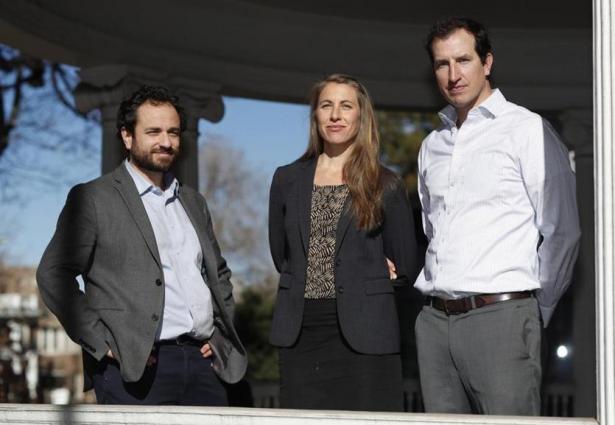DENVER — Young people from around the world who provided low-cost child care for American families will share in a proposed $65.5 million settlement of a lawsuit brought by a dozen former au pairs against the companies that bring the workers to the United States.
Nearly 100,000 au pairs, mostly women, who worked in American homes over the past decade will be entitled to payment under the proposed settlement filed in Denver federal court Wednesday, a month before the case brought by a dozen former au pairs from Colombia, Australia, Germany, South Africa, and Mexico was set to go to trial.
They claimed 15 companies authorized to bring au pairs to the United States colluded to keep their wages low, ignoring overtime and state minimum wage laws and treating the federal minimum wage for au pairs as a maximum amount they can earn. In some cases, the lawsuit said, families pushed the limits of their duties, requiring au pairs to do things like feed backyard chickens, help families move and do gardening, and not allowing them to eat with the family.
‘‘This settlement, the hard-fought victory of our clients who fought for years on behalf of about 100,000 fellow au pairs, will be perhaps the largest settlement ever on behalf of minimum wage workers and will finally give au pairs the opportunity to seek higher wages and better working conditions,’’ said David Seligman, director of Denver-based Towards Justice, which filed the lawsuit in 2014. It was later litigated by New York-based firm Boies Schiller Flexner.
Under the settlement, which still must be approved by a judge, the companies agreed to make sure au pairs are informed about their legal rights in the future, but they denied any wrongdoing.
Lawyers now need to track down au pairs who came to the US on J-1 visas between Jan. 1, 2009, and Oct. 28, 2018, and have set up a website to help spread the word about the deal.
The program, overseen by the US.State Department, was launched as a cultural exchange program in 1986 as demand for child care grew. At first there were only 3,000 participants as part of a pilot, but last year there were over 20,000. The program occupies a gray area between work and an international relations effort, and critics say that makes it ripe for abuse.
The sponsors said they were just following regulations from the State Department — which last adjusted au pair pay to $195.75 for a 45-hour work week in 2009 after the federal minimum wage rose to $7.25. Their hourly wage has actually been $4.25 though: Families were told to deduct 40 percent of their pay to cover the room and board they’re required to provide the au pairs, a practice challenged by the lawsuit.
The sponsors contended it’s not a work program, noting au pairs have cultural exchange visas, not work visas. They have touted au pairs as a cheaper, flexible option for child care since they are paid the same amount regardless of how many children they care for, unlike at child care centers where parents pay a fee for each child, sometimes after spending time on a wait list. In court filings, they argued requiring families to pay more in states with higher minimum wages would destroy the program by making au pairs unaffordable, hurting its foreign policy goals.
According to a 2016 report on US child care by the Washington-based think tank New America, the average cost of full-time child care in a daycare center for children up to 4 years old is $9,589 a year for each child, more than the average cost of in-state college tuition. The average cost of full-time care at home with a nanny was $28,353 — 53 percent of the median US household income and nearly three times the annual pay for an au pair.
While sometimes confused with nannies, au pairs have much less experience and earn a lot less.
The practice of having au pairs — French for ‘‘on par with’’ — developed in postwar Europe, where young people lived with families in other countries to learn a language in exchange for helping with childcare and some housework. In Europe, au pairs generally are limited to working 30 hours a week.
Sarah Azuela said the ad she saw her final year of college in Mexico promised coming to the United States to work as an au pair would be the best year of her life, full of travel, meeting new people and becoming part of an American family. But she says what grew into a two-year stay turned out to be the worst time of her life, with her feeling more like a slave subject to the whims of her host families than a member of the household.
At her last placement — working for a single mother in Virginia — Azuela said that in addition to helping care for three children, she cooked all the meals, cleaned, planted flowers and packed the family’s belongings and helped move them twice, first to an interim apartment and then to a permanent home.
Nevertheless, Azuela was grateful her host mother gave her time to study for a business certificate at a university, which led her to extend her stay, and for not yelling or threatening to hit her as a previous host had done.
‘‘I don’t wish anyone to experience anything like this,’’ Azuela, who is from Hermosillo, Mexico, but now lives in Wisconsin, said about why she joined in the lawsuit.


Spread the word